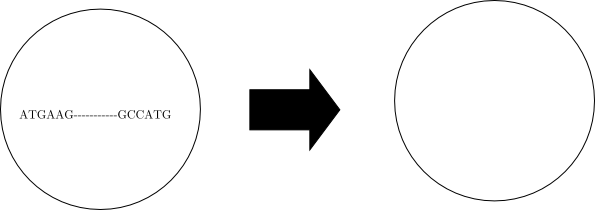A Life Is the Original Form of the Natural Number One
October 14, 2013 1 Comment
The modern science began from the statement of Descartes: I am thinking, therefore I exist. He said in Discourse on the Method as follows:
Lastly, I decided to pretend that everything that had ever entered my mind was no more true than the illusions of my dreams, because all the mental states we are in while awake can also occur while we sleep and dream, without having any truth in them. But no sooner had I embarked on this project than I noticed that while I was trying in this way to think everything to be false it had to be the case that I, who was thinking this, was something. And observing that this truth I am thinking, therefore I exist was so firm and sure that not even the most extravagant suppositions of the sceptics could shake it, I decided that I could accept it without scruple as the first principle of the philosophy I was seeking.
His statement means that anyone cannot deny the existence of oneself. The premise of his statement is the unity of the self. That is, the self has properties of the natural number one.
The above equation is the starting point of all science. Then, I consider more deeply.
What is the natural number one? Ancient Greeks quested this problem most profoundly since the dawn of history. There were great discussions about this issue in Ancient Greece. Among these arguments, Plato described three important properties of the natural number one in the Republic. Socrates said “there is a unity such as you demand, and each unit is equal, invariable, indivisible.” The natural number one has these three properties.
Next, I shall compare the self to the object with respect to three properties of the natural number one. Firstly, any object can be divided. Even, a diamond is crackable. Secondly, any object is not eternal. Geographical features of the geosphere have always changed through the history of the earth. Even, continents moved. Thirdly, there is no pair of objects, which are completely equal to each other. In contrast, the self has properties, which are close to the natural number one. Firstly, even though there are various people on the earth, everyone is a human. This is the basic principle of democracy. Everyone is equal in the sense that we identify everyone as a human. That is, humans instinctively regards that selves are equal to each other. Secondly, a human usually keeps ego identity from birth to death. That is to say, the self of is invariable. Thirdly, the self cannot be divided. If a self of a person is disturbed, the person might have a mental illness: schizophrenia or multiple personality. A self of a human, who is mentally healthy, is indivisible. Therefore, the self has similar properties of the natural number one.
I shall pursue the origin of the similarity between the self and one. When I phylogenetically trace back to the origin of the self, I reach the last common universal ancestor. Most biologists believe that life on Earth arose only once. Hence, all lives are descendants of the first single cell. The basis of the dogma is as follows. All living things are composed of cells, which have common features. All cells have DNA, plasma membrane, cytoplasm and ribosomes. Additionally, the basic biochemical system is identical in all lives. DNA preserves genetic information. Next, it is transcribed into RNA. Subsequently, RNA is translated into the amino acid sequence of the protein. Especially, The most astonishing fact is the universality of the genetic code of all lives. Genetic code is the code, which is required for the translation of the genetic information to the amino acid sequence. Thus, the human insulin gene can be put into E. coli genome. Now, human insulin is made by E. coli.
When we accept the universality of all lives. we can abstract the equality of all lives. Also, basic features of lives have been invariable since the arising of the first life. Furthermore, if a cell is divided by force, the cell will die. A cell is indivisible. The death of a life is the only irreversible process on the Earth. Therefore, a life is the original form of the natural number one.


